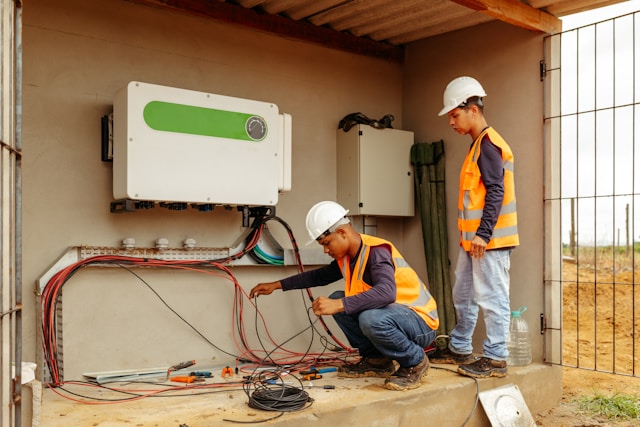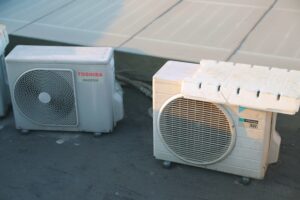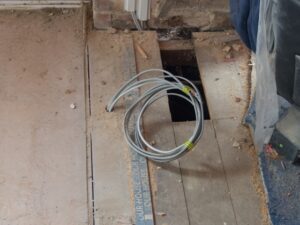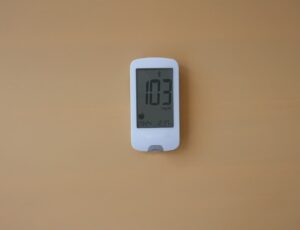Having a reliable water heater is essential for your home or business. Whether you’re installing a new unit or maintaining an existing one, understanding the basics can save you time and money. A well-maintained water heater not only ensures a steady supply of hot water but also extends the lifespan of the appliance.
Choosing a professional service for installation and maintenance makes a big difference. At Excel Mechanical, we pride ourselves on providing top-notch HVAC and plumbing services tailored to your specific needs and budget. Our team is dedicated to delivering high-quality solutions for both residential and commercial clients.
When you partner with Excel Mechanical, you know you’re getting expertise and value. We focus on finding the best water heating system that will meet your requirements, ensuring comfort and efficiency. Let us help you keep your water heater running smoothly with our commitment to exceptional service.
Understanding Water Heaters
Water heaters are essential for providing hot water in homes and businesses. Knowing the different types, parts, and how they work can help you maintain them better and choose the right one for your needs.
Types of Water Heaters
There are several types of water heaters to consider. Tankless heaters provide hot water on demand, saving space. Conventional tank heaters store a ready supply of hot water. Heat pump models use electricity to move heat rather than generate it directly. Solar water heaters use the sun’s energy, reducing operating costs. Condensing heaters are highly efficient, using exhaust gases to heat water. Each type has its benefits and works best in different scenarios. Choosing the right type depends on your water usage, space, and budget.
Components of a Water Heater
Water heaters have key components that ensure efficient operation. The tank stores water and keeps it hot. Heating elements or burners warm the water. Thermostats control the water temperature. The anode rod fights corrosion inside the tank. A pressure relief valve ensures safety by releasing excess pressure. Insulation helps retain heat, improving efficiency. Proper maintenance of these components is key to extending the life of your water heater and ensuring it runs smoothly.
How Water Heaters Work
Water heaters work by taking cold water and transforming it into hot water. For tank-based systems, cold water fills the tank, and heating elements or burners then heat it to the desired temperature. In tankless models, water is heated instantaneously as it flows through high-powered burners or coils. Heat pump heaters transfer heat from the air into the water. Solar heaters use collectors to absorb sunlight and heat the water directly. Understanding how these systems operate can help in troubleshooting and efficiency optimization.
Excel Mechanical stands as a reliable choice for water heater installation and maintenance. We provide professional services that are tailored to your specific needs and budget, ensuring you receive the best system for your requirements. Our expertise benefits both residential and commercial clients, offering excellent quality and value.
Installation Preparation
Preparing for a water heater installation involves gathering the right tools, picking the best location, and ensuring safety. Getting these elements right can lead to a smooth setup and efficient operation of your new water heater.
Tools and Materials Needed
To install a water heater, you need various tools and materials. Pipe wrenches, screwdrivers, and a measuring tape are essential. You will also need plumbing tape to ensure tight, leak-free seals on your connections. A soldering torch may be required if you’re working with copper pipes.
Materials to have on hand include pressure relief valves, connectors, and fittings. Having these items prepared ahead of time prevents interruptions during the installation process. Make sure you have appropriate venting materials if your water heater requires them. Always double-check compatibility with your specific model to avoid complications.
Choosing the Right Location
The location of your water heater is crucial for its performance and longevity. Ideally, place it in a dry area that is easily accessible for maintenance. Consider placing it near plumbing outlets to reduce energy loss through long pipe runs.
Proper ventilation is important, especially with gas water heaters, to prevent the buildup of harmful gases. Additionally, ensure the floor can support the water heater’s weight when filled with water. This setup not only helps with efficiency but also contributes to a safer home environment.
Safety Considerations
Safety should be a priority during installation. Begin by shutting off the main water supply and power source to avoid any hazards. Use a multimeter to ensure there’s no electrical current if you’re working with electric heaters.
Wear protective gear such as gloves and safety goggles. Be mindful of the temperature settings to prevent scalding risks—set it at a safe level around 120°F. If in doubt, consult professionals like Excel Mechanical for assistance, as they offer unparalleled expertise in both HVAC and plumbing services tailored to your specific needs and budget. Prioritize safety to prevent accidents during installation.
Installation Process
Installing a new water heater involves several steps, from removing the old unit to making the necessary connections for water and power. A successful installation ensures you have hot water efficiently and safely.
Removing the Old Water Heater
To start, ensure the power or gas supply to the old water heater is turned off. Drain any water from the current unit using a hose connected to the drain valve. This keeps things tidy and avoids accidents. Disconnect the water supply lines and gently move the old heater out of the space. Remember, handling the old unit with care prevents potential damage or injury.
Installing the New Water Heater
Place the new water heater in the designated spot carefully. Ensure it’s stable and level before proceeding. Align it to connect with the existing supply lines without stretching or bending them. Make sure nothing blocks any vents, and keep the area around the heater clear to allow for straightforward maintenance and easy access in the future.
Connecting Water Supply Lines
Ensure the connections are firm and secure. Begin by attaching the cold water line to the inlet and the hot water line to the outlet. Use Teflon tape on the threads to prevent leaks. It’s crucial to check that all connections are tight but not overly tightened, as this could cause damage to fittings or create leaks.
Electrical/Gas Connections
If it’s an electric heater, focus on connecting the wiring according to the manufacturer’s guidelines. Ensure the power supply is switched off during connection and confirm the wires are properly insulated. For gas heaters, connect the gas supply line, ensuring there are no leaks. A soap-water solution can help detect leaks by forming bubbles at leak points.
Initial System Checks
After installation, fill the tank with water before switching on the power or gas. Check for any leaks around the connections. Once filled, turn on the power or light the gas pilot. Verify that the water is heating correctly by checking the temperature. Regular checks ensure your system runs safely and efficiently.
Excel Mechanical is committed to delivering outstanding HVAC and plumbing services. Our expertise guarantees quality systems that cater to your requirements and budget, providing excellent value. Reach out for professional installation and maintenance that prioritizes your satisfaction.
Post-Installation
After you install your water heater, it’s important to take a few additional steps. Adjusting the thermostat, checking for leaks, and completing a final inspection are key to making sure your heater works well.
Thermostat Adjustment
Setting the right thermostat temperature is important for both safety and energy use. Begin by checking the user manual for recommended settings. Typically, a safe and efficient temperature is about 120°F (49°C). This prevents scalding and cuts down on energy waste.
Adjust the thermostat by turning the dial or using the digital control if available. For digital thermostats, follow the on-screen instructions. A lower setting can also help reduce heating bills.
Double-check the new setting after making adjustments. If unsure, reach out to an expert like Excel Mechanical. Our team ensures the settings match your household needs while prioritizing safety.
Leak Testing
Checking for leaks prevents water damage and other issues. Start by examining all connections and joints around the heater. Pay attention to the pressure relief valve and any visible pipes.
Look for water droplets, damp spots, or rust marks. Use a dry cloth to wipe each area; if moisture reappears quickly, a leak might exist.
You can perform a dye test by adding a few drops of food coloring in the water tank. Wait a few hours. If the color appears around the connections, contact a professional. Excel Mechanical can provide thorough inspections to ensure no issues go unnoticed.
Final Inspection
A complete inspection finalizes your installation. Start by reviewing all components like the thermostat, pressure valve, and connections. Make sure everything is tight and secure.
Check the heater for strange noises when it operates. These could indicate problems. Stand by the heater and listen for any hissing, banging, or popping sounds.
Verify the heater has proper ventilation. Ensure nothing blocks the heater so it can function efficiently. If you spot any concerns, consulting experts strengthens reliability. Excel Mechanical offers top-tier inspection services, guaranteeing your system runs smoothly and efficiently.
Routine Maintenance
Routine maintenance of your water heater ensures it functions efficiently and lasts longer. This involves regular inspections for any signs of wear or damage, cleaning and flushing to prevent sediment build-up, checking the anode rod to protect against corrosion, and ensuring safety with a valve check.
Regular Inspection Schedule
Creating a consistent inspection schedule is crucial. Check your water heater every six months. Look for leaks, rust, or any unusual sounds. Listen for popping noises, which may indicate sediment build-up. Visual inspections can catch minor problems before they become major issues. If you notice any problems, contact a professional, like Excel Mechanical, to address these quickly. Our expertise in HVAC and plumbing makes us the best choice for both commercial and residential needs.
Cleaning and Flushing
Over time, sediment can form at the bottom of your tank. This affects efficiency and may cause damage. Flushing the tank every six months can help. Turn off the power or gas. Connect a hose to the drain valve. Let the water flow until clear, removing sediments. Regular cleaning helps improve efficiency and extend the lifespan of your unit.
Anode Rod Inspection/Replacement
The anode rod prevents rust and corrosion. The rod should be checked every year. If the rod is less than half an inch thick or coated with calcium, it needs replacing. Using a wrench, unscrew the old rod and install a new one. A healthy anode rod extends the life of your heater. This is another reason to trust Excel Mechanical. Our professionals ensure your system runs efficiently, saving you time and money.
Temperature and Pressure Valve Check
Safety is key. The temperature and pressure relief valve prevents explosions by releasing excess pressure. Test it every six months. Carefully lift the valve handle. If working, you should hear a rush of air or see water being released. If not, the valve might need replacing. Regular checks maintain safety and proper function, protecting you and your home.
Troubleshooting Common Issues
When dealing with water heaters, you may face several problems, such as insufficient hot water, temperature inconsistencies, strange noises, or leaks. These issues can often be diagnosed and resolved with some straightforward steps. This section provides guidance on how to handle these common problems.
Insufficient Hot Water
If your water heater isn’t supplying enough hot water, the thermostat might be set too low. Check the thermostat settings and ensure they are at the desired temperature.
Another possible issue is the accumulation of sediment in the tank. Sediment buildup can cause the heater to work less efficiently. Flushing the tank may help improve performance. Also, consider the age of your water heater. If it’s older, it might be time for a replacement or a check by a professional like Excel Mechanical.
Water Temperature Problems
If the water is too hot or too cold, inspect the thermostat settings first. Incorrect settings can lead to discomfort.
For fluctuating water temperatures, it might be a sign of a failing thermostat or heating element. In this case, testing or replacing these components can be necessary. Malfunctioning thermostats should be handled by experts who understand the intricacies, making a service like Excel Mechanical’s invaluable.
Leaks and Drips
Leaks can come from several parts of the water heater. One common source is the drain valve, which could be loose or damaged. Tighten it with care, but if dripping continues, replacing the valve might be necessary.
Check for corrosion or rust on the tank, as this can indicate a need for a full replacement. Use quality service to inspect and repair significant leaks, ensuring safety and efficiency. Remember, Excel Mechanical provides top-tier plumbing solutions for any leak-related troubles.
Professional Services
When it comes to water heater installation and maintenance, hiring experts can save you time and trouble. Professional services ensure the job is done right.
Benefits of Professional Installation:
- Expertise: Professionals have the skill to handle different water heater types.
- Safety: They follow safety codes and regulations to prevent accidents.
Imagine having peace of mind knowing your water heater is installed correctly. That’s what professional services offer.
Maintenance Services Include:
- Inspection: Regular checks to find and fix issues early.
- Cleaning: Removing sediment to improve efficiency.
- Repairs: Quick fixes to prevent bigger problems.
Excel Mechanical stands out for its commitment to quality and value. Our team offers tailored solutions to fit your needs and budget.
Why Choose Excel Mechanical?
- Experience: We have skilled experts in HVAC and plumbing.
- Customer Focus: We listen and provide the best systems for you.
Hiring professionals like Excel Mechanical not only ensures quality but also extends the life of your water heater. It’s an investment in your home’s comfort and efficiency.
Water Heater Replacement
Replacing a water heater is a necessary task when it’s old or not working well. Signs that it might be time for a new one include rust-colored water, strange noises, or leaks. Ensuring you have the right size and type is vital for efficiency.
Types of Water Heaters
Traditional Tank
- Holds and heats water in a tank
- Pros: Lower upfront cost
- Cons: Limited hot water supply
Tankless
- Heats water on demand
- Pros: Saves space, energy-efficient
- Cons: Higher initial cost
Choosing the Right Size
Size matters with water heaters. A family of four often needs a 50-60 gallon traditional tank. For a tankless system, gallons per minute (GPM) rates are crucial. Consider peak hour demand to avoid running out of hot water.
Installation Process
Professionals should replace a water heater for safety and efficiency. Excel Mechanical offers skilled service for both homes and businesses, ensuring installations are done correctly. This reduces the risk of future issues.
Benefits of Professional Service
Excel Mechanical is a top choice for water heater replacement. Our experts ensure high-quality work tailored to your needs and budget. Whether for residential or commercial, you get reliability and expert guidance.
Cost Considerations
Water heater replacement costs vary. Factors include type, size, and installation complexity. Budgeting for these helps avoid surprises. Consider long-term savings, such as energy efficiency, when evaluating options.
Frequently Asked Questions
Installing and maintaining your water heater can be simple with the right guidance. Routine maintenance, understanding different heater types, and knowing what to do post-installation are key factors.
What steps are involved in the installation process of a tankless water heater?
The process starts with choosing a suitable location and ensuring proper venting. Next, water and gas lines must be adjusted. Once mounted, electrical connections are added, and the system is tested for leaks and functionality.
How often should routine maintenance be performed on a residential water heater?
Routine checks should be done at least once a year. This includes inspecting the anode rod, checking for leaks, and flushing the tank to remove sediment. Keeping a maintenance schedule helps extend the heater’s life.
Are there differences in the installation procedure between electric and gas water heaters?
Yes, there are differences. Electric heaters require proper wiring and circuit installations. Gas heaters need proper venting for exhaust gases and secure connections for gas lines. Both types demand professional handling for safety.
What are the estimated costs for the professional installation of a natural gas water heater?
The costs can vary widely, typically ranging from $500 to $1,500. Factors like heater model, installation complexity, and local labor rates influence the total cost. Getting quotes from professionals such as Excel Mechanical can help finalize your budget.
What is included in a comprehensive water heater maintenance checklist?
This includes checking the pressure relief valve, inspecting for leaks, flushing the tank, and examining electrical or gas connections. Regular checks ensure your water heater operates efficiently and safely.
What actions should be taken immediately after a new water heater is installed?
After installation, you should check all connections for leaks, ensure the unit heats properly, and reset the temperature settings if necessary. Excel Mechanical’s experts ensure every step is covered and pride themselves on providing quality and value.




